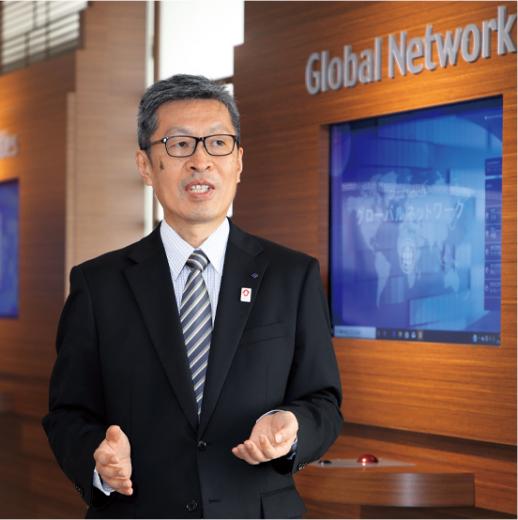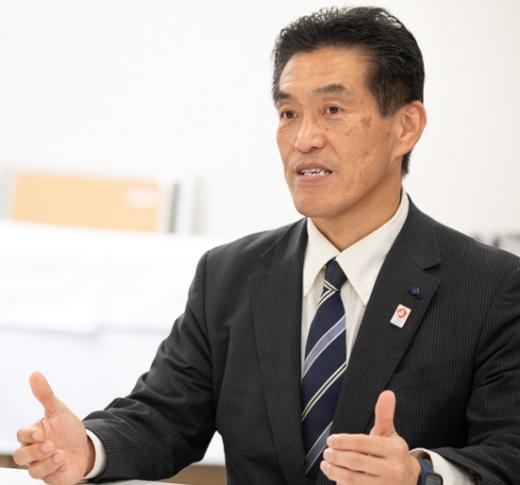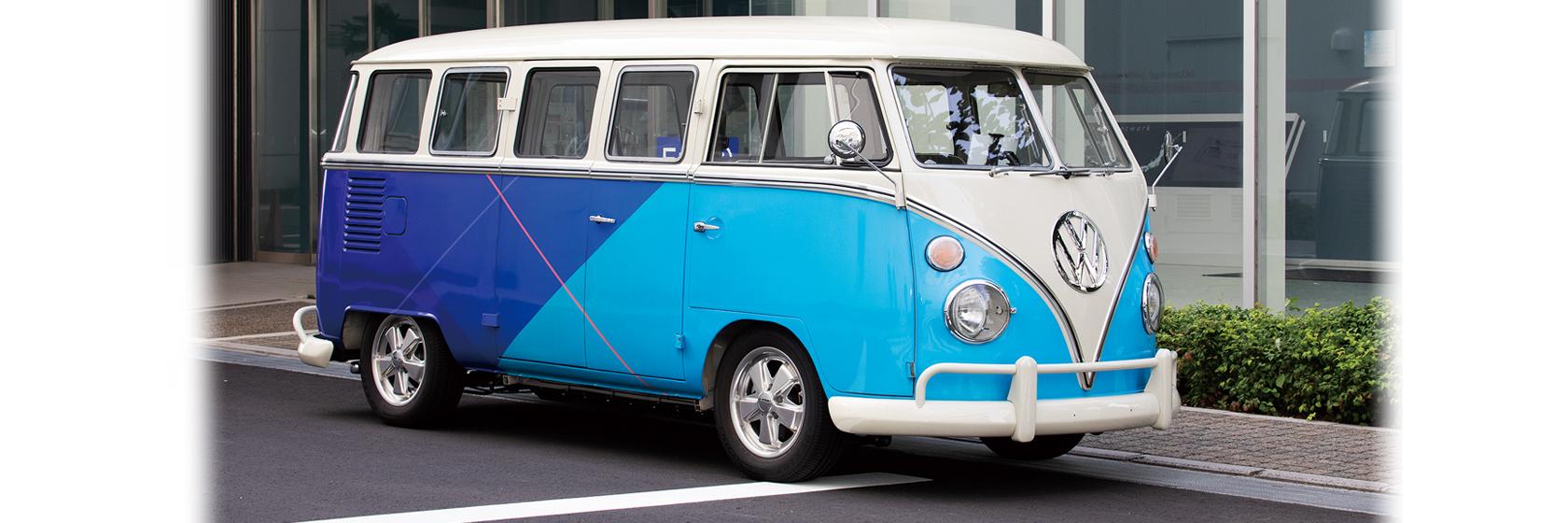
Mobility × Energy × Communication = Connected Society
Impact of CASE and the Goal of CAS-EV
Armed with the Sumitomo Electric Group’s integrated power
The Sumitomo Electric Group does not think that addressing the CASE era is limited to developing and supplying new products requested by automakers. Using the Group’s integrated power, it aims to build a new future city or Connected Society, which means a connectable society for everyone, at any time, anywhere. For example, in “creating new social infrastructure with technology integrating mobility and energy,” “achieving liberated, safer, and more comfortable transportation with technology connecting people, cars, things, and society,” and “permeating energy sharing throughout society with technology connecting cars, houses, and communities,” the advent of CASE may well be a trigger for demonstrating the Sumitomo Electric Group’s integrated power. Masataka Inoue, Deputy General Manager of the Automotive Business Unit, described the change as "normal evolution."

“While the advent of CASE is destroying the existing business program and bringing about drastic changes, I think Sumitomo Electric will seamlessly undergo normal evolution. In the 400-year history, Sumitomo has expanded its business catering to social changes and requirements. To accommodate the CASE-oriented changes in the global auto industry, Sumitomo Electric will operate its business, considering how to support communities. While facing difficulties in using traditional methods effectively, we want to overcome the barrier and produce results worthy of recognition by the market and customers. To address the new changes brought about by CASE, we have to gather the courage to enter into a new phase. The code of conduct for the CAS-EV Development Promotion Division includes facing challenges with a sense of ownership in this era of great transformation. Positive self-denying efforts will promote the growth of the CAS-EV Development Promotion Division and produce favorable results,” said Inoue.
Strengths in electrification, highspeed communication, and elemental technology
What are the strengths of the Sumitomo Electric Group in the CASE era?
“We have to clarify use cases that show how cars will be used and what is required of cars. Until now, forecasting viewpoints, or envisioning the future based on past results and current issues, have been effective, but from now on, backcasting thinking, or envisioning what future should be and deciding what should be done now in a backward-looking manner, is necessary. We have accumulated knowledge of electric cables and communication cables for a long time. High-speed communications that achieve ‘Connected’ in CASE and electrification in the ‘Electric’ area are our Group’s strengths. In addition, our Group has a variety of elemental technologies. We are proud that only our Group has sintering, winding wire, various devices, information communications, and other elemental technologies that CASE requires, and I think we can exploit our full potential in CASE. In doing so, we must create new value by matching needs with seeds. We aim at producing high-value-added future wiring harnesses with new methods in our core business of wiring harnesses,” said Inoue.
Establish a position of a partner
The vision Inoue talked about is being implemented by the CAS-EV Development Promotion Division, which is led by General Manager Hiroki Hirai. He has been involved in CASE since the predecessor organization of the CAS-EV Development Promotion Division, the CAS-EV Development Promotion Office, was established.
“Before CASE, the products we manufactured were based on drawings we received from automakers. However, the advent of CASE has completely changed the circumstances surrounding us. We have been requested to create new value of cars together with automakers. This means that we are no longer a Tier 1 automotive supplier and have become a so-called Tier 0.5 supplier. We need in-depth discussion on the value of cars, that is to say, requirements for cars, from a broad and bird’s eye viewpoint,” said Hirai.
To consider the value of cars, we must examine not only the car itself but also the surrounding infrastructure. This inevitably leads to a study of the whole society. One thing we have to pay attention to is that the efforts of the Sumitomo Electric Group are not aimed at the development and production of CASE-compatible products from the beginning. The starting point is to consider what is needed to improve the value of cars and create new value. Therefore, the Group had to drastically change the traditional way it had done business. CASE was a trigger to establishing ourselves in the position of a partner with automakers. Hirai thought, “we have to change our mindset.” The symbol of our mindset changes was the manufacture of an EV (electric vehicle).
Necessity of changing mindsets with a car-centric viewpoint

“To solve the problems and issues of automakers in the CASE era, we have to have a car-centric viewpoint. Since we had only a wiring-harness-centric viewpoint at that time, I called on our members to manufacture a whole vehicle. I thought that we could obtain a carcentric viewpoint through the work, which would lead to detailed proposals that help improve the value of cars,” said Hirai.
Hirai and the vehicle-manufacturing members bought an old Volkswagen bus and started remodeling it into an EV. They aimed at manufacturing an EV as easily as possible. They developed a concept of a basic EV platform with a motor and an inverter, battery packs, and a chassis. Then they designed, assembled, and evaluated the EV by themselves. Receiving support from an overseas engineering manufacturer, they completed the EV in about two years and test-drove it on a driving circuit.
“Thinking about cars from the viewpoint of cars has become their habit. I created opportunities for automakers to examine the EV. The fact that we manufactured a vehicle made a huge impact, increasing discussions with automakers in the upstream layer,” said Hirai.
They opened the NEV showroom, where they invite automakers’ workers to engage in discussion. Although this is a showroom for CASE-related products, Hirai says that it is a training center focused on discussion. Members are trained there to become partners for development. More than 700 workers of automakers have already participated in intensive discussions with members, who have learned a lot in the course of the process and experienced steady growth.

NEXT
Mission of Wiring Harness in the CASE Era
– Commitment to Manufacturing, Changes in Manufacturing –
Registration of public notification
If you register your e-mail address, we will notify you when the latest issue is published. If you wish, please register from the registration form.
To delete your registration, please visit here.
